Abstract
Brownian dynamics simulations are performed to investigate the role of long-range electrostatic forces in the association of the monoclonal antibody HyHEL-5 with hen egg lysozyme. The electrostatic field of the antibody is obtained from a solution of the nonlinear Poisson-Boltzmann using the x-ray crystal coordinates of this protein. The lysozyme is represented as an asymmetric dumbell consisting of two spheres of unequal size, an arrangement that allows for the modeling of the orientational requirements for docking. Calculations are done with the wild-type antibody and several point mutants at different ionic strengths. Changes in the charge distribution of the lysozyme are also considered. Results are compared with experiment and a simpler model in which the lysozyme is approximately by a single charged sphere.
Full text
PDF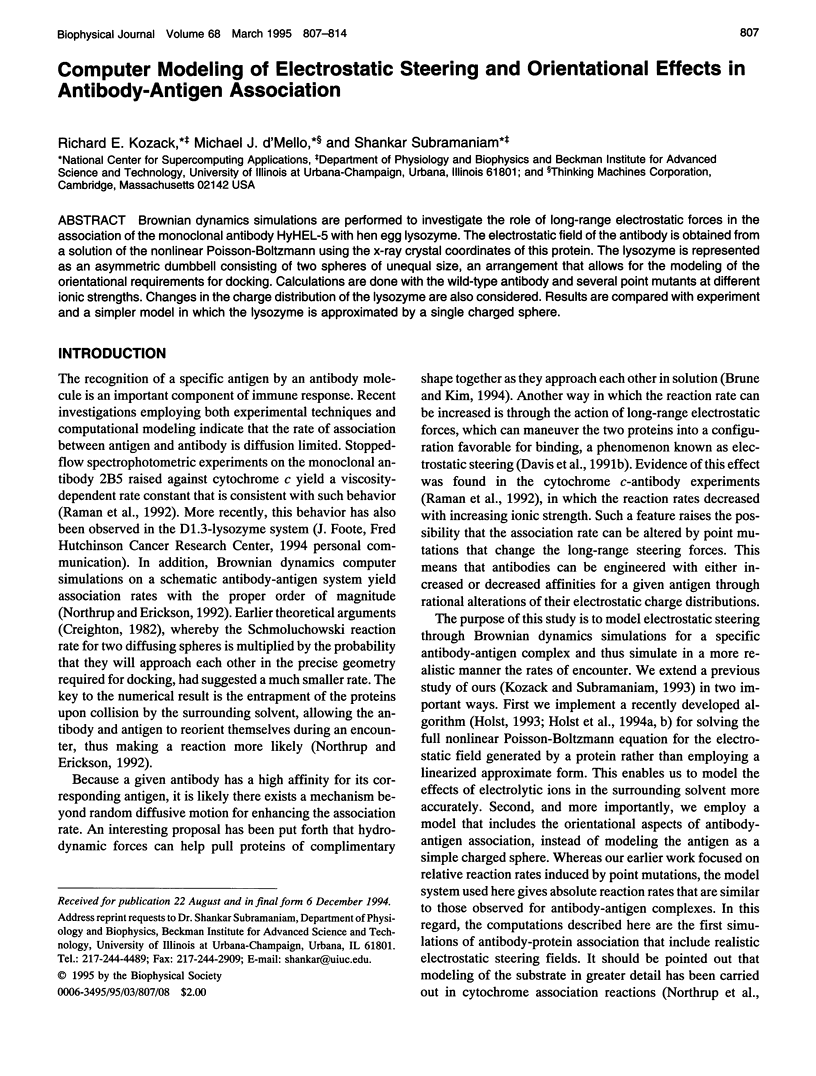
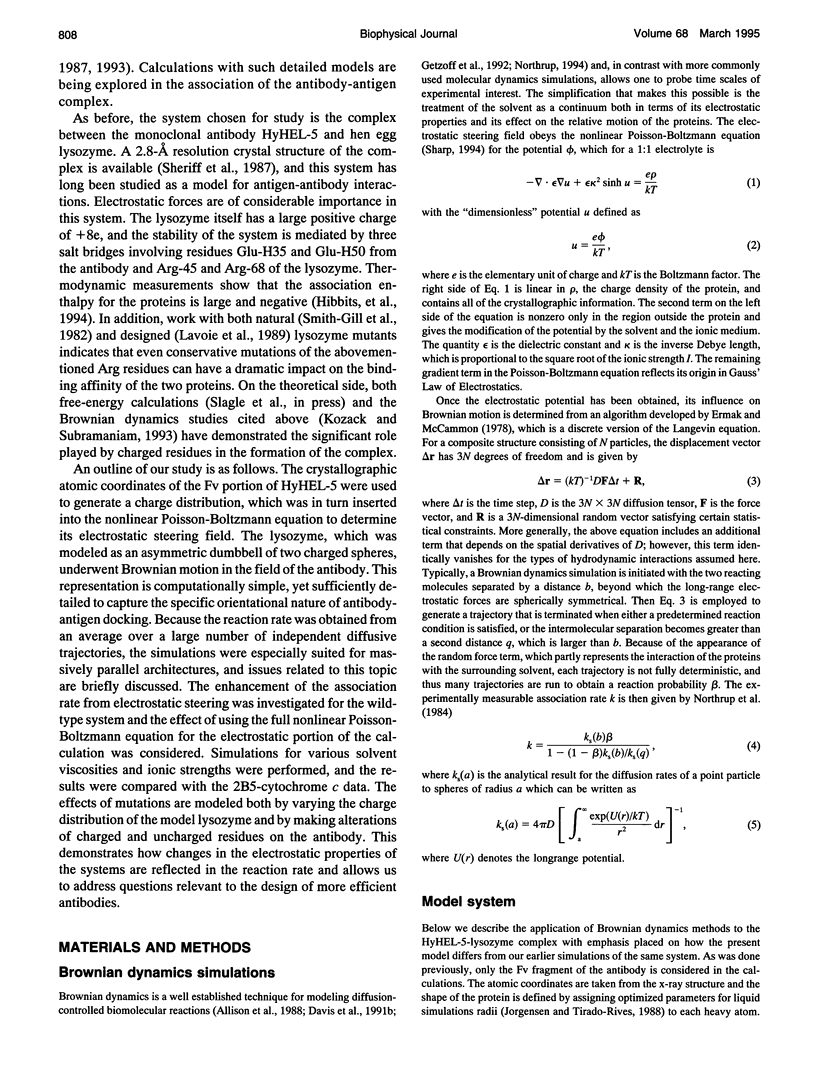
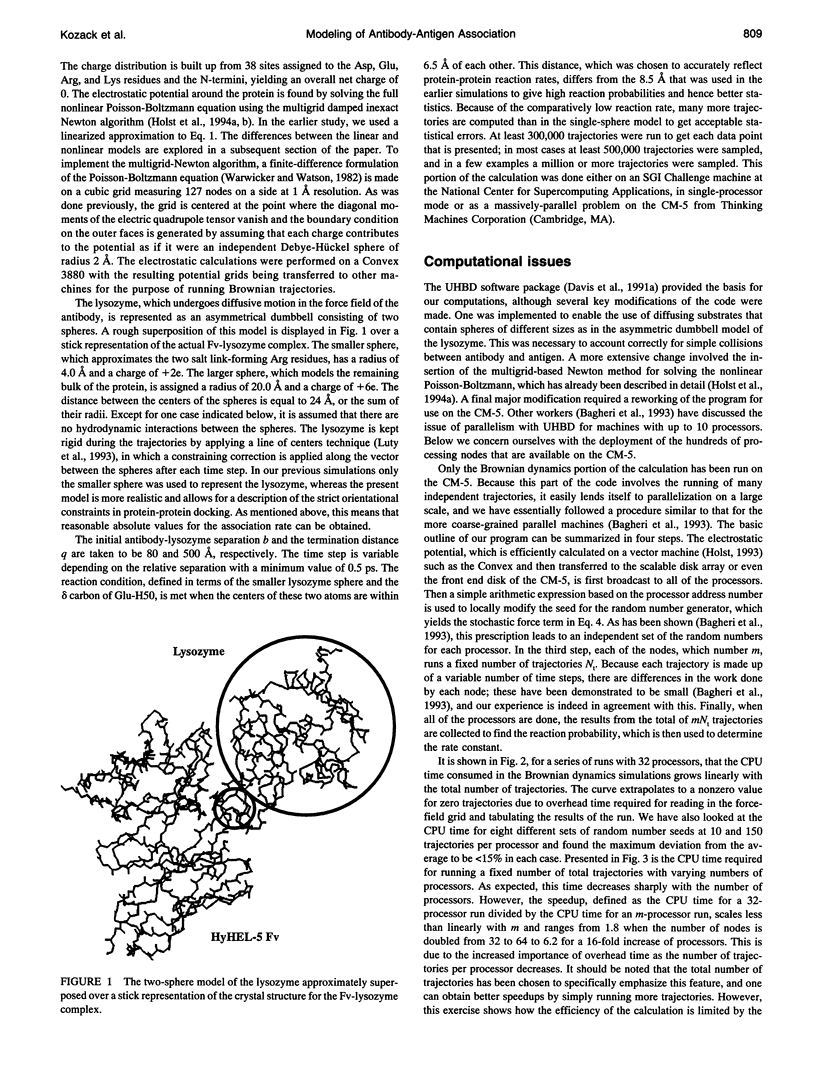
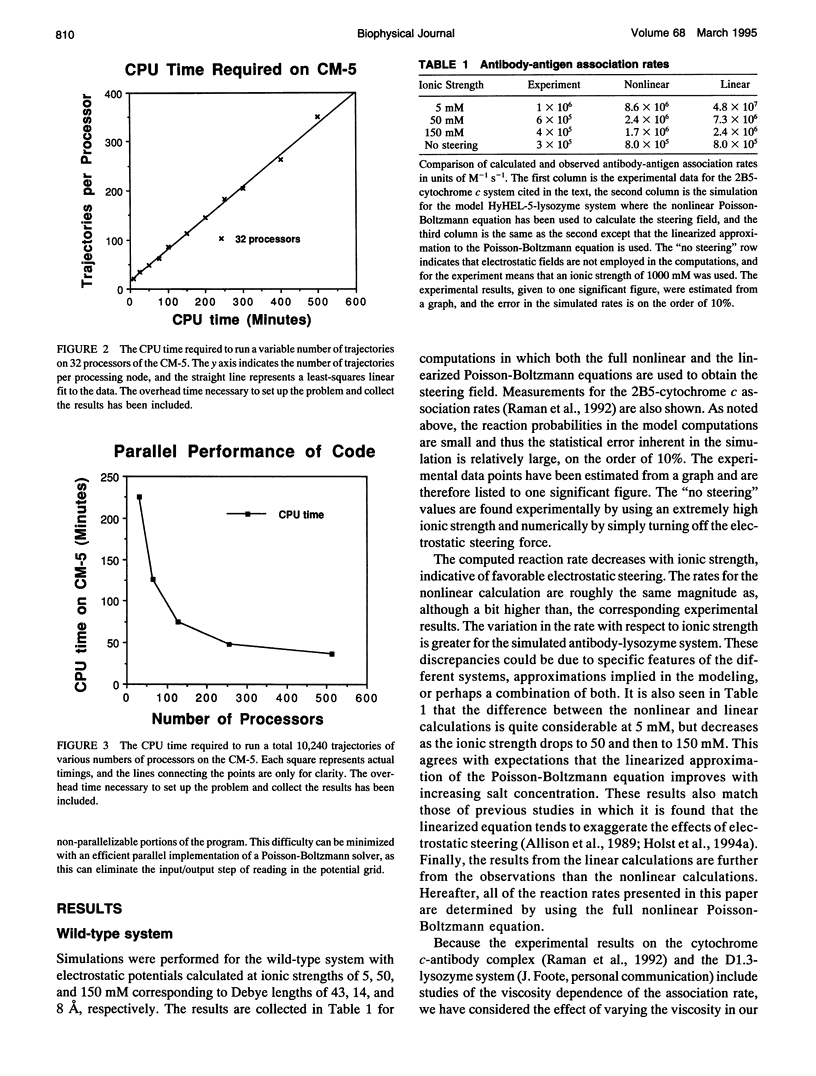
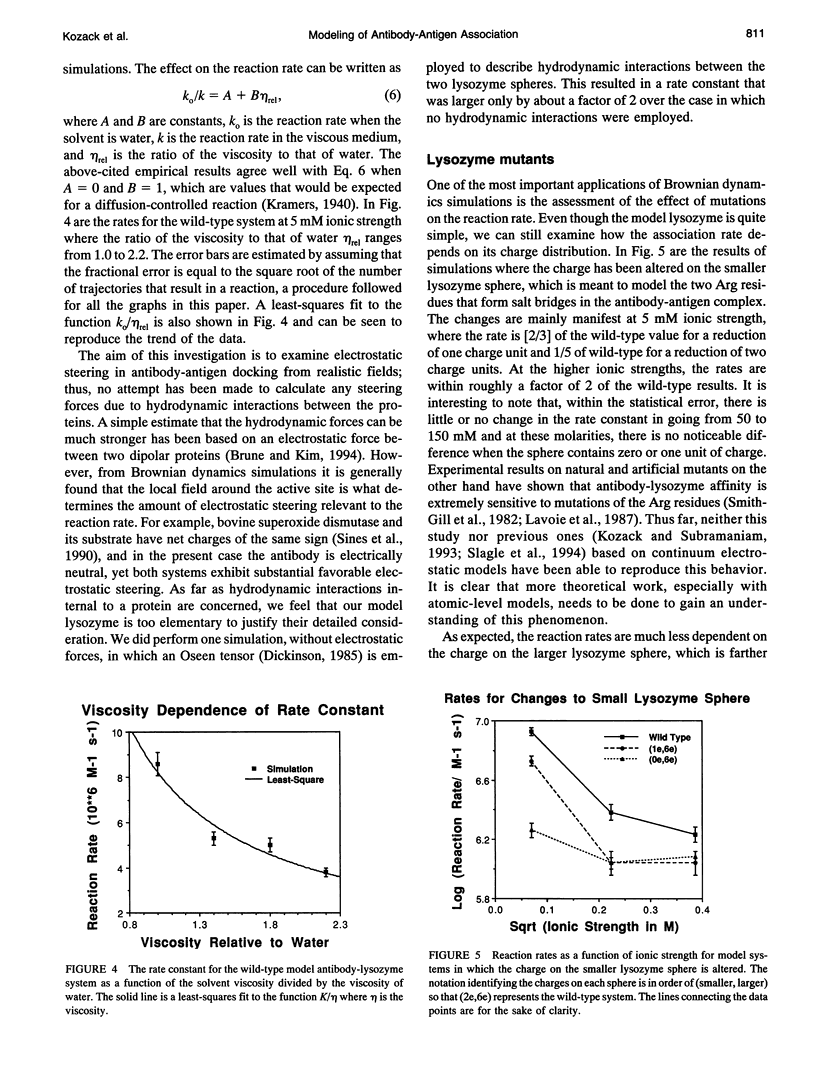
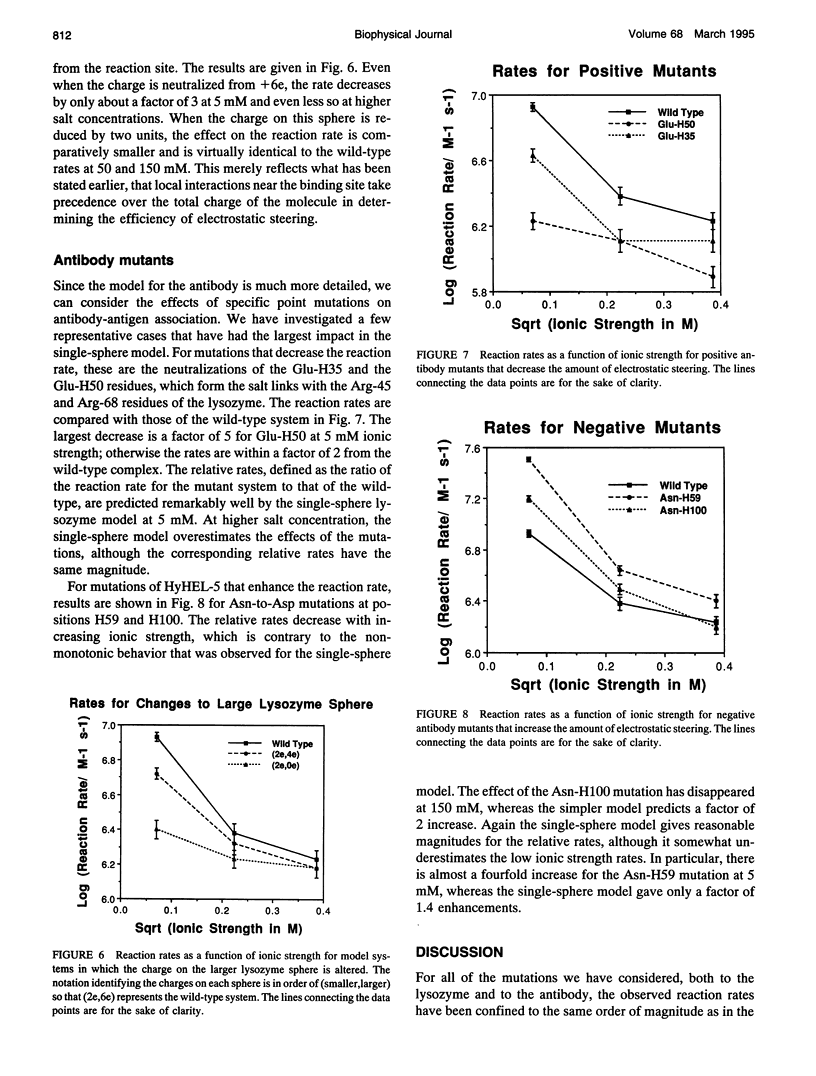
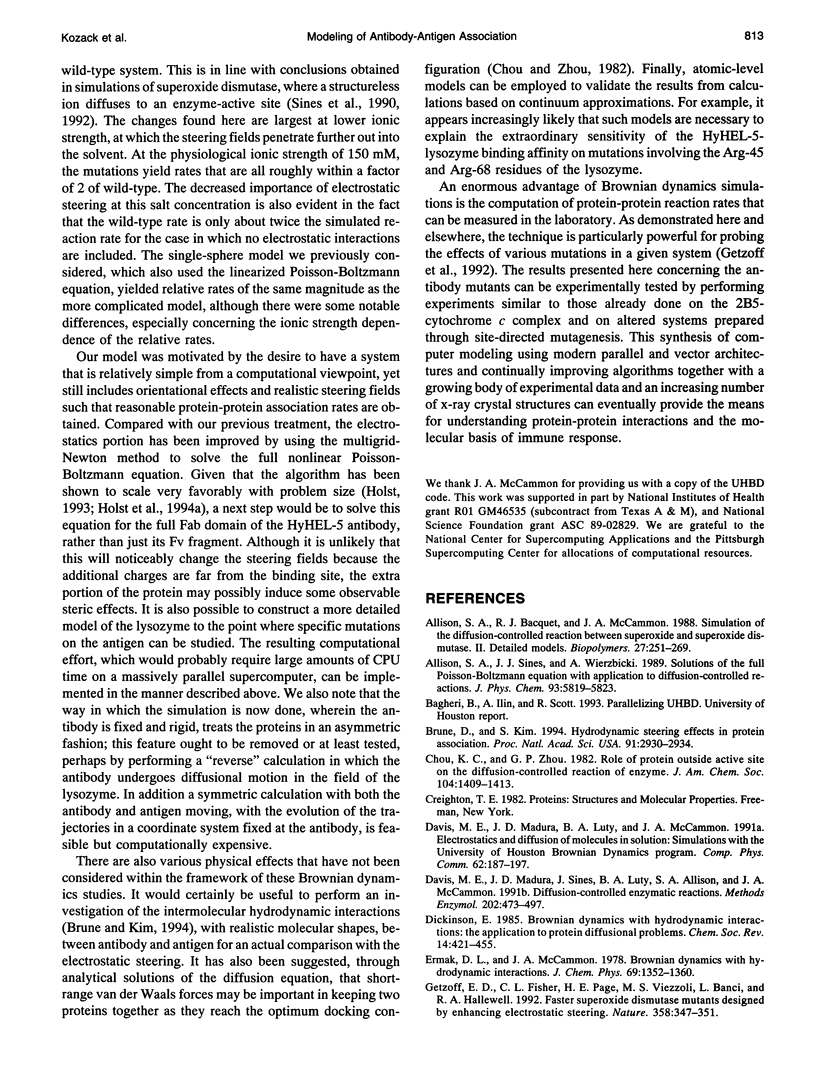
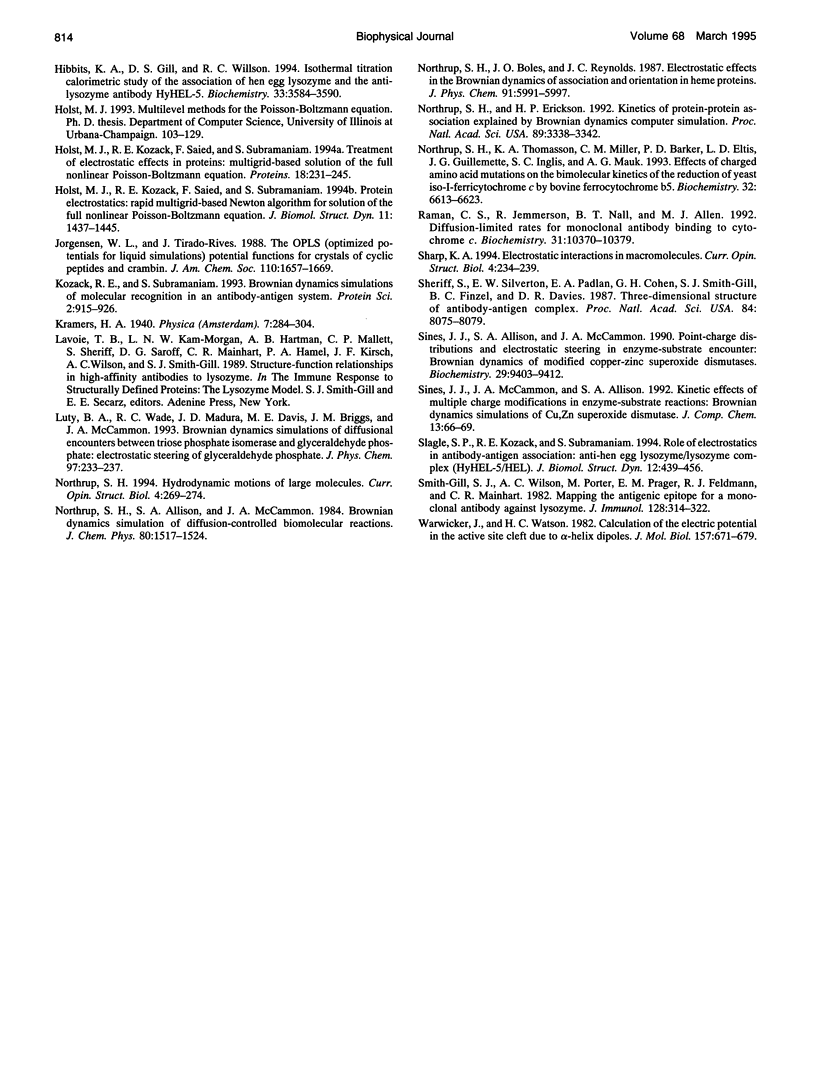
Selected References
These references are in PubMed. This may not be the complete list of references from this article.
- Allison S. A., Bacquet R. J., McCammon J. A. Simulation of the diffusion-controlled reaction between superoxide and superoxide dismutase. II. Detailed models. Biopolymers. 1988 Feb;27(2):251–269. doi: 10.1002/bip.360270207. [DOI] [PubMed] [Google Scholar]
- Brune D., Kim S. Hydrodynamic steering effects in protein association. Proc Natl Acad Sci U S A. 1994 Apr 12;91(8):2930–2934. doi: 10.1073/pnas.91.8.2930. [DOI] [PMC free article] [PubMed] [Google Scholar]
- Davis M. E., Madura J. D., Sines J., Luty B. A., Allison S. A., McCammon J. A. Diffusion-controlled enzymatic reactions. Methods Enzymol. 1991;202:473–497. doi: 10.1016/0076-6879(91)02024-4. [DOI] [PubMed] [Google Scholar]
- Getzoff E. D., Cabelli D. E., Fisher C. L., Parge H. E., Viezzoli M. S., Banci L., Hallewell R. A. Faster superoxide dismutase mutants designed by enhancing electrostatic guidance. Nature. 1992 Jul 23;358(6384):347–351. doi: 10.1038/358347a0. [DOI] [PubMed] [Google Scholar]
- Hibbits K. A., Gill D. S., Willson R. C. Isothermal titration calorimetric study of the association of hen egg lysozyme and the anti-lysozyme antibody HyHEL-5. Biochemistry. 1994 Mar 29;33(12):3584–3590. doi: 10.1021/bi00178a015. [DOI] [PubMed] [Google Scholar]
- Holst M., Kozack R. E., Saied F., Subramaniam S. Protein electrostatics: rapid multigrid-based Newton algorithm for solution of the full nonlinear Poisson-Boltzmann equation. J Biomol Struct Dyn. 1994 Jun;11(6):1437–1445. doi: 10.1080/07391102.1994.10508078. [DOI] [PubMed] [Google Scholar]
- Holst M., Kozack R. E., Saied F., Subramaniam S. Treatment of electrostatic effects in proteins: multigrid-based Newton iterative method for solution of the full nonlinear Poisson-Boltzmann equation. Proteins. 1994 Mar;18(3):231–245. doi: 10.1002/prot.340180304. [DOI] [PubMed] [Google Scholar]
- Kozack R. E., Subramaniam S. Brownian dynamics simulations of molecular recognition in an antibody-antigen system. Protein Sci. 1993 Jun;2(6):915–926. doi: 10.1002/pro.5560020605. [DOI] [PMC free article] [PubMed] [Google Scholar]
- Northrup S. H., Erickson H. P. Kinetics of protein-protein association explained by Brownian dynamics computer simulation. Proc Natl Acad Sci U S A. 1992 Apr 15;89(8):3338–3342. doi: 10.1073/pnas.89.8.3338. [DOI] [PMC free article] [PubMed] [Google Scholar]
- Northrup S. H., Thomasson K. A., Miller C. M., Barker P. D., Eltis L. D., Guillemette J. G., Inglis S. C., Mauk A. G. Effects of charged amino acid mutations on the bimolecular kinetics of reduction of yeast iso-1-ferricytochrome c by bovine ferrocytochrome b5. Biochemistry. 1993 Jul 6;32(26):6613–6623. doi: 10.1021/bi00077a014. [DOI] [PubMed] [Google Scholar]
- Raman C. S., Jemmerson R., Nall B. T., Allen M. J. Diffusion-limited rates for monoclonal antibody binding to cytochrome c. Biochemistry. 1992 Oct 27;31(42):10370–10379. doi: 10.1021/bi00157a027. [DOI] [PubMed] [Google Scholar]
- Sheriff S., Silverton E. W., Padlan E. A., Cohen G. H., Smith-Gill S. J., Finzel B. C., Davies D. R. Three-dimensional structure of an antibody-antigen complex. Proc Natl Acad Sci U S A. 1987 Nov;84(22):8075–8079. doi: 10.1073/pnas.84.22.8075. [DOI] [PMC free article] [PubMed] [Google Scholar]
- Sines J. J., Allison S. A., McCammon J. A. Point charge distributions and electrostatic steering in enzyme/substrate encounter: Brownian dynamics of modified copper/zinc superoxide dismutases. Biochemistry. 1990 Oct 9;29(40):9403–9412. doi: 10.1021/bi00492a014. [DOI] [PubMed] [Google Scholar]
- Slagle S. P., Kozack R. E., Subramaniam S. Role of electrostatics in antibody-antigen association: anti-hen egg lysozyme/lysozyme complex (HyHEL-5/HEL). J Biomol Struct Dyn. 1994 Oct;12(2):439–456. doi: 10.1080/07391102.1994.10508750. [DOI] [PubMed] [Google Scholar]
- Smith-Gill S. J., Wilson A. C., Potter M., Prager E. M., Feldmann R. J., Mainhart C. R. Mapping the antigenic epitope for a monoclonal antibody against lysozyme. J Immunol. 1982 Jan;128(1):314–322. [PubMed] [Google Scholar]
- Warwicker J., Watson H. C. Calculation of the electric potential in the active site cleft due to alpha-helix dipoles. J Mol Biol. 1982 Jun 5;157(4):671–679. doi: 10.1016/0022-2836(82)90505-8. [DOI] [PubMed] [Google Scholar]


